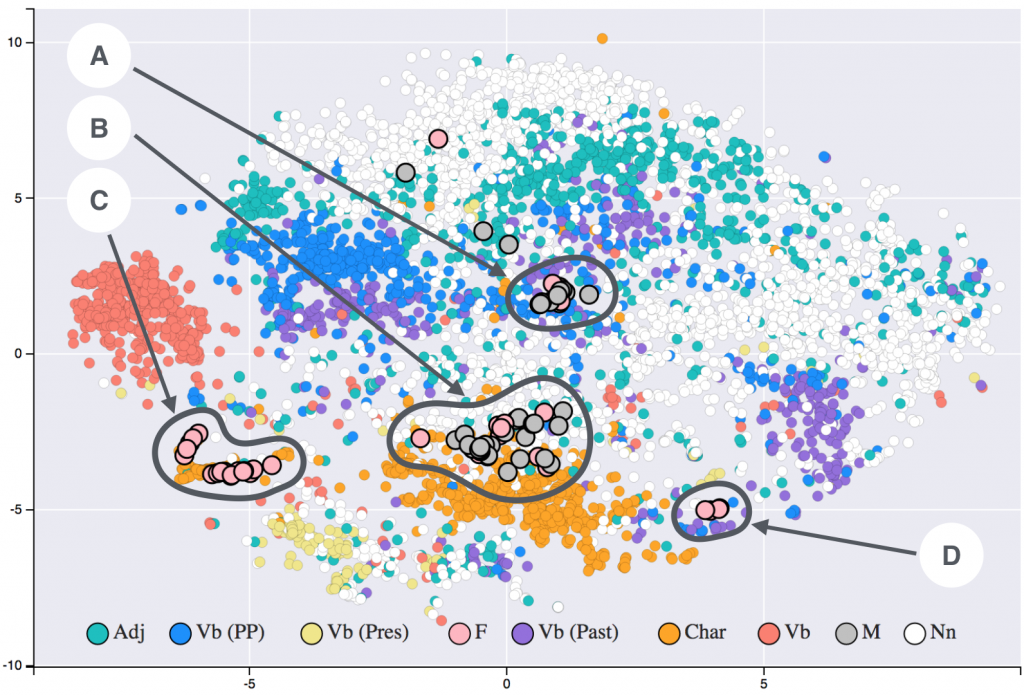Four takeaways from vibe coding
A successful asynchronous session and synchronous session output.
Bringing Digital health & Gen AI research to life!
A successful asynchronous session and synchronous session output.
Here is how you can run the CQL execution with unstructured data and FHIR terminology support using our LLM-in-the-Loop stack as presented at AMIA #CIC25.
The GitHub repository below is a fork of the CQL Execution Framework, which provides a TypeScript/JavaScript library for executing Clinical Quality Language (CQL) artifacts expressed as JSON ELM. The fork introduces an experimental feature supporting LLM-based assertion checking on DocumentReference. The framework enables execution of CQL logic within different data models, such as QDM and FHIR, but does not provide direct support for data models or terminology services. The library implements various features from CQL 1.4 and 1.5 but has some limitations, such as incomplete support for specific datatypes and functions.
MedpromptJS converts CQL statements to natural language, splits unstructured data into chunks, and generates yes/no answers based on LLM-mapped facts.
Healthcare data is heterogenous with several types of data like reports, tabular data, and images. Combining multiple modalities of data into a single model can be challenging due to several reasons. One challenge is that the diverse types of data may have different structures, formats, and scales which can make it difficult to integrate them into a single model. Additionally, some modalities of data may be missing or incomplete, which can make it difficult to train a model effectively. Another challenge is that different modalities of data may require different types of pre-processing and feature extraction techniques, which can further complicate the integration process. Furthermore, the lack of large-scale, annotated datasets that have multiple modalities of data can also be a challenge. Despite these challenges, advances in deep learning, multi-task learning and transfer learning are making it possible to develop models that can effectively combine multiple modalities of data and achieve reliable performance.

Kedro is an open-source Python framework that helps data scientists and engineers organize their code, increase productivity and collaboration, and make it easier to deploy their models to production. It is built on top of popular libraries such as Pandas, TensorFlow and PySpark, and follows best practices from software engineering, such as modularity and code reusability. Kedro supplies a standardized structure for organizing code, handling data and configuration, and running experiments. It also includes built-in support for version control, logging, and testing, making it easy to implement reproducible and maintainable pipelines. Additionally, Kedro allows to easily deploy the pipeline on cloud platforms like AWS, GCP or Azure. This makes it a powerful tool for creating robust and scalable data science and data engineering pipelines.
I have built a few kedro packages that can make multi-modal machine learning easy in healthcare. The packages supply prebuilt pipelines for preprocessing images, tabular and text data and build fusion models that can be trained on multi-modal data for easy deployment. The text preprocessing package currently supports BERT and CNN-text models. There is also a template that you can copy to build your own pipelines making use of the preprocessing pipelines that I have built. Any number and combination of data types are supported. Additionally, like any other kedro pipeline, these can be deployed on kubeflow and VertexAI. Do comment below if you find these tools useful in your research.
kedro-multimodal (this link opens in a new window) by dermatologist (this link opens in a new window)
Template for multi-modal machine learning in healthcare using Kedro. Combine reports, tabular data and image using various fusion methods.
OpenFaaS is an open-source framework for building serverless functions with containers. Serverless functions are pieces of code that are executed in response to a specific event, such as an HTTP request or a message being added to a queue. These functions are typically short-lived and only run when needed, which makes them a cost-effective and scalable way to build cloud-native applications. OpenFaaS makes it easy to build, deploy, and manage serverless functions. OpenFaaS CLI minimizes the need to write boilerplate code. You can write code in any supported language and deploy it to any cloud provider. It provides a set of base containers that encapsulates the ‘function’ with a webserver that exposes its HTTP service on port 8080 (incidentally the default port for Google Cloud Run). OpenFaaS containers can be directly deployed on Google Cloud Run and with the faas CLI on any cloud provider.
Kubeflow is a toolkit for building and deploying machine learning models on Kubernetes. Kubeflow is designed to make it easy to build, deploy, and manage end-to-end machine learning pipelines, from data preparation and model training to serving predictions and implementing custom logic. It can be used with any machine learning framework or library. Google’s Vertex AI platform can run Kubeflow pipelines. Kubeflow pipeline components are self-contained code that can perform a step in the machine learning workflow. They are packaged as a docker container and pushed to a container registry that the Kubernetes cluster can access. A Kubeflow component is a containerized command line application that takes input and output as command line arguments.
OpenFaaS containers expose HTTP services, while Kubeflow containers provide CLI services. That introduces the possibility of tweaking OpenFaaS containers to support CLI invocation, making the same containers usable as Kubeflow components. Below I explain how a minor tweak in the OpenFaaS templates can enable this.
Let me take the OpenFaaS golang template as an example. The same principle applies to other language templates as well. In the golang-middleware’s main.go, the following lines set the main route and start the server. This exposes the function as a service when the container is deployed on Cloud Run.
http.HandleFunc("/", function.Handle),
listenUntilShutdown(s, healthInterval, writeTimeout) I have added the following lines [see on GitHub] that expose the same function on the command line for Kubeflow.
if len(os.Args) < 2 {,
listenUntilShutdown(s, healthInterval, writeTimeout)
} else {
dat, _ := os.ReadFile(os.Args[1])
_dat := function.HandleFile(dat)
_ = os.WriteFile(os.Args[2], _dat, 0777)
} If the input and output file names are supplied on the command line as in kubeflow, it reads from and writes to those files. The kubeflow component definition is as below:
implementation:
container:
image: <image:version>
command: [
'sh',
'-c',
'mkdir --parents $(dirname "$1") && /home/app/handler "$0" "$1"',
]
args: [{inputPath: Input 1}, {outputPath: Output 1}]With this simple tweak, we can use the same container to host the function on any cloud provider as serverless functions and Kubeflow components. You can pull the modified template from the repo below.
golang-http-template (this link opens in a new window) by dermatologist (this link opens in a new window)
Golang templates for OpenFaaS using HTTP extensions
This post is meant to be an instruction guide for healthcare professionals who would like to join my projects on GitHub.

Contribution is not always coding. You can clean up stuff, add documentation, instructions for others to follow etc. Issues and feature requests should be posted under the ‘issues’ tab and general discussions under the ‘Discussions’ tab if one is available.
There’s no better time than now to choose a repo to contribute!
The need for computerized clinical decision support is becoming increasingly obvious with the COVID-19 pandemic. The initial emphasis has been on ‘replacing’ the clinician which for a variety of reasons is impossible or impractical. Pragmatically, clinical decision support systems could provide clinical knowledge support for clinicians to make time-sensitive decisions with whatever information they have at the point of patient care.

Providing clinical decision support requires some formal way of representing clinical knowledge and complex algorithms for sophisticated inference. In knowledge management terms, the information requires to be transformed into actionable knowledge. Knowledge needs to be represented and stored in a way conducive to easy inference (knowledge reuse)1. I have been exploring this domain for a considerable period of time, from ontologies to RDF datasets. With the advent of popular graph databases (especially Neo4J ), this seems to be a good knowledge representation method for clinical purposes.
To cut a long story short, I have been working on building a suite of JAVA libraries to support knowledge extraction, annotation and transformation to a graph schema for inference. I have not open-source it yet as I have not decided on what license to use. However, I am posting some preliminary information here to assess interest. Please give me a shout, if you share an interest or see some potential applications for this. As always, I am open to collaboration.
The JAVA package consists of three modules. The ‘library’ module wraps the NCBI’s E-Utils API to harvest published article abstracts if that is your knowledge source. Though data extraction from the clinical notes in EMR’s is a recent trend, it is challenging because of unstructured data and lack of interoperability. The ‘qtakes’ module provides a programmable interface to my quick-ctakes or the quarkus based apache ctakes, a fast clinical text annotation engine. Finally, the graph module provides the Neo4J models, repositories and services for abstracting as a knowledge graph.
The clinical knowledge graph (ckb) consists of entities such as Disease, Treatment and Anatomy and appropriate relationships and cypher queries are defined. The module exposes services that can be consumed by JAVA applications. It will be available as a maven artifact once I complete it.
UPDATE: May 30, 2021: The library (ckblib) is now available under MPL 2.0 license (see below). Feel free to use it in your research.
COVID vaccine rollout has the potential to bring relief to billions of people around the world. But as encouraging as these programs may be, it is extremely important to note that a vaccine cannot be as effective if it is not effectively distributed and trusted by the public.

IBM Blockchain has a vaccine distribution network for manufacturers to proactively monitor for adverse events and improve recall management. Moderna is planning to explore vaccine traceability with the IBM blockchain.
The International Air Transport Association (IATA) is planning to launch a system of digital ‘passports’ as proof that passengers have been vaccinated against COVID-19. Blockchain technology could offer a better data-storage system for such vaccination records. A decentralized blockchain ledger would be anonymous, immutable and transparent and the entries can be publicly audited.
A vaccine blockchain system could support vaccine traceability and smart contract functions and can be used to address the problems of vaccine expiration and vaccine record fraud. Additionally, the use of machine learning models can provide valuable recommendations to immunization practitioners and recipients, allowing them to choose better immunization methods and vaccines as recommended by this study. A blockchain-based system developed by Singapore-based Zuellig Pharma can help governments and healthcare providers manage vaccine distribution and administration. UK hospitals are using blockchain to track the temperature of coronavirus vaccines.
In my opinion, a blockchain application in healthcare should satisfy the following characteristics:
Vaccination satisfies the above criteria and as such blockchain may be a good solution for this problem. Before the COVID-19 pandemic, I had played a bit with solidity and made a web application with three different views:
Vac-chain is a prototype of on-chain storage of vaccination information on Ethereum blockchain using smart contracts in solidity using the truffle Drizzle box (React/Redux).
The UMLS, or Unified Medical Language System, is a set of files and software that brings together many health and biomedical vocabularies and standards to enable interoperability between computer systems.
Natural Language Processing (NLP) on the vast amount of data captured by electronic medical records (EMR) is gaining popularity. The recent advances in machine learning (ML) algorithms and the democratization of high-performance computing (HPC) have reduced the technical challenges in NLP. However, the real challenge is not the technology or the infrastructure, but the lack of interoperability — in this case, the inconsistent use of terminology systems.

NLP tasks start with recognizing medical terms in the corpus of text and converting it into a standard terminology space such as SNOMED and ICD. This requires a terminology mapping service that can do this mapping in an easy and consistent manner. The Unified Medical Language System (UMLS) terminology server is the most popular for integrating and distributing key terminology, classification and coding standards. The consistent use of UMLS resources leads to effective and interoperable biomedical information systems and services, including EMRs.
To make things easier, UMLS provides both REST-based and SOAP-based services that can be integrated into software applications. A high-level library that encapsulated these services, making the REST calls easy to the user is required for the efficient use of these resources. Umlsjs is one such high-level library for the UMLS REST web services for javascript. It is free, open-source and available on NPM, making it easy to integrate into any javascript (for browsers) or any nodejs applications.
The umlsjs package is available on GitHub and the NPM. It is still work in progress and any coding/documentation contributions are welcome. Please read the CONTRIBUTING.md file on the repository for instructions. If you use it and find any issues, please report it on GitHub.